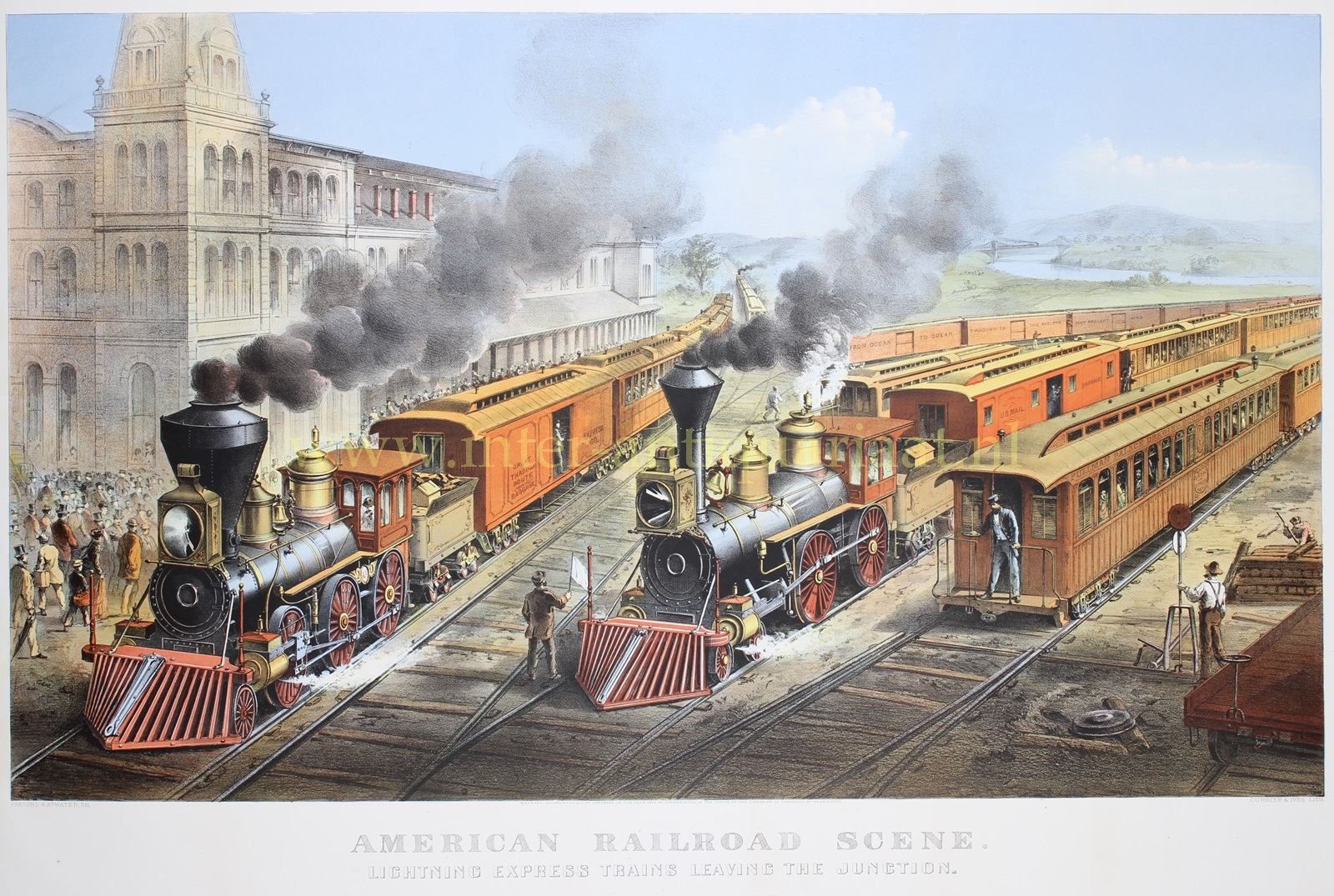Transcontinental Railroad – Currier & Ives, 1874
RARE RAILROAD LITHOGRAPH FROM THE TIME OF THE SETTLEMENT OF THE WEST “American Railroad Scene: Lightning Express Trains Leaving the…
Lees verder€4.500
RARE RAILROAD LITHOGRAPH FROM THE TIME OF THE SETTLEMENT OF THE WEST
“American Railroad Scene: Lightning Express Trains Leaving the Junction,” lithograph designed by Charles R. Parsons and Lyman Atwater and printed in colour by Currier & Ives in 1874. Size: (image) 48.9 × 81.6 cm, (image + text: 55.2 × 81.6 cm).
During the 19th century, new methods of transportation helped to support the expansion of the United States. America’s first transcontinental railroad, also known as the Lightning Express, had opened in 1869 and connected New York City with San Francisco. It provided one of the most important ways that people traveled to the West Coast and changed America.
Starting in 1853, Nathaniel Currier (and later Currier & Ives) published thirty prints featuring trains for Americans who wanted pictures of the then-modern mode of transportation that provided a convenient way to travel and ship goods around the country.
In this large railroad scene of a bustling train junction, two trains pulled by large black locomotives with smoke billowing from their stacks approach the lower left corner of the image, where their tracks appear to converge. Between the trains, a man stands holding a white flag as a signal to one of the trains. At the far left, there is a large railroad station building with archways, colonnades, and a tower at the corner; on the sidewalks are crowds of pedestrians. At the right of the image, a conductor stands at the back of a caboose of a third train. Further to the right, a brakeman stands beside the tracks holding a signal pole, while another figure works on a pile of railroad ties. In the distant right background, there is a beautiful river landscape with mountains beyond. For nineteenth-century viewers, this print showed how the railroad was an instrument of social, economic and political change transforming rural America — a country that was then almost a century old.
Nathaniel Currier, who founded his successful New York-based lithography firm in 1835, produced thousands of hand-colored prints in various sizes that together create a vivid panorama of mid-to-late nineteenth century American life and its history. People eagerly acquired such lithographs featuring picturesque scenery, rural and city views, ships, portraits, hunting and fishing scenes, domestic life and numerous other subjects, as an inexpensive way (compared to paintings) to decorate their homes or business establishments. As the firm expanded, Nathaniel recruited his younger brother Charles into the business. In 1857, James Merritt Ives (the firm’s accountant since 1852 and Charles’s brother-in-law) was made a business partner; subsequently renamed Currier & Ives, the firm continued until 1907.
The artist team of Charles R. Parsons and Lyman Atwater, noted for their maritime scenes and city views, made over thirty images for Currier and Ives.
Price: Euro 4.500,-


